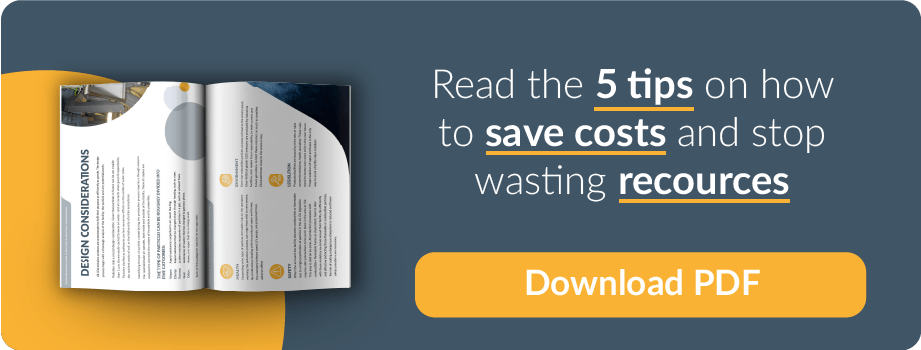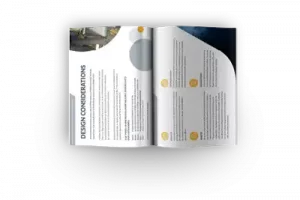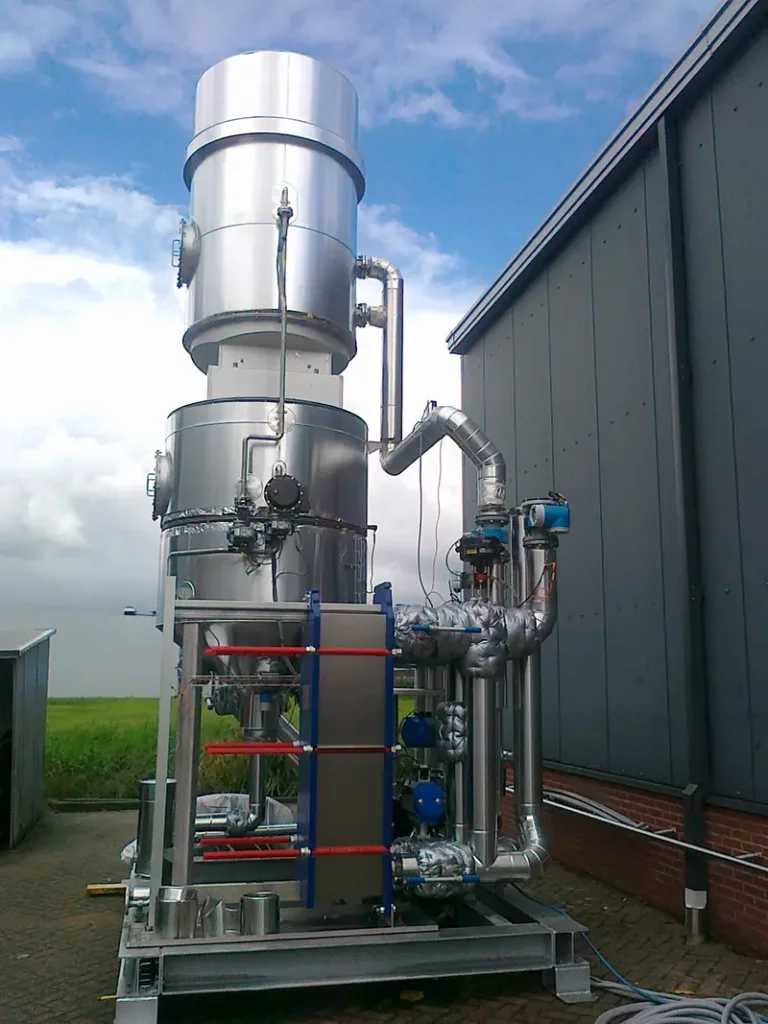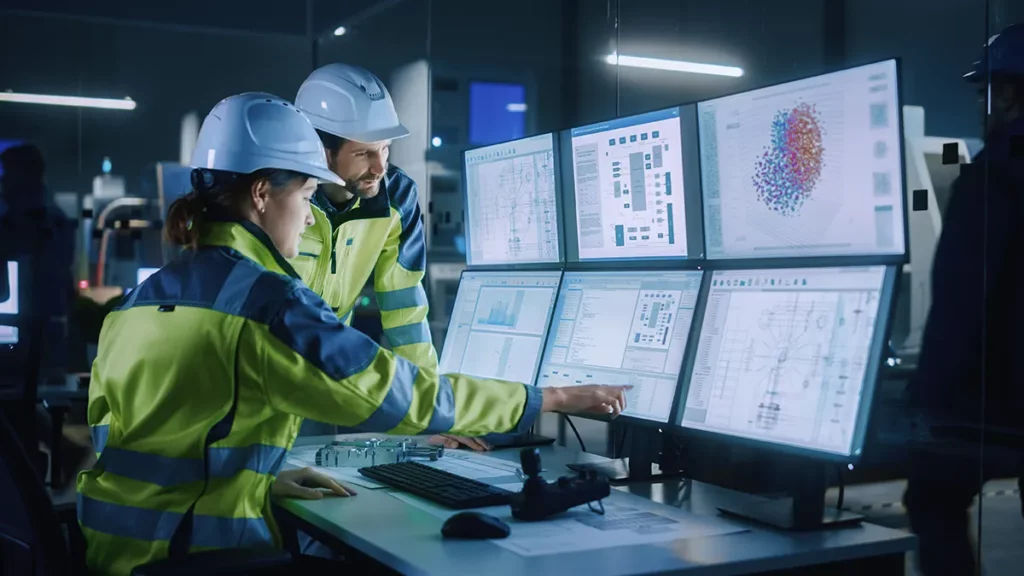Running your plant as efficiently as possible may never have been more important. Covid, a war in Europe, rising gas prices… We live in an uncertain world. Production is scaled down by many manufacturers due to volatile costs and uncertainty. And the climate crisis makes it even more important to reduce the waste of materials and energy. But what are the most effective ways to improve industrial energy efficiency? And how do you make sure your investments have a positive ROI?
Emission control is an area that is often overlooked when it comes to saving and recovering energy. Here are 7 tips for industrial energy saving, with effective emission control:
1. Make data-driven decisions
Reducing industrial energy costs starts with making data-driven decisions. Data can help you determine where energy can be saved, without it affecting quality, efficiency, and safety. It enables you to validate your solutions in advance, so you can make sure they have a positive ROI.
When it comes to emission control, it’s all about creating balance. You want to limit over-extraction, which increases your energy consumption and produces unnecessary waste. And you also want to prevent under-extraction, which could cause pipe pollution, downtime, extra maintenance, and risk of explosions. Data helps you create that perfect balance.
But how do you collect and interpret that data?
Pre-engineering study
To make data-driven decisions you’ll need to start with a pre-engineering study giving clear insights where to improve.
Site visit and measurements
The first step in this study is taking measurements. When you work with JOA, our specialists will first conduct a site visit. During this visit, they will take a series of measurements, which will help you choose the perfect solution for your specific situation.
These measurements will include:
- a review of existing dust and/or vapor extraction
- establishing the emission points and the concentration of the emissions
- considering flow patterns, pressures, humidity and volatile organic compounds (VOCs), using a wide range of specialist tools
- consulting with operators
Force Balancing Model
There are four different forces influencing particles in industrial processes:
- Adhesion: keeps particles attached to a surface.
- Gravity: the easiest force to calculate once the particle density is known. Often keeps the particles attached to a surface.
- Lift and drag: forces that try to remove particles from the surface. Both are directly related to the average flow velocity and size of the particle.
It’s valuable to find out particle characteristics to ensure the right pressure, flow rate, and/or fan speed. It can also help you take action against condensation-related fouling, resulting in optimized energy usage
So how does this work?
At JOA we are able to analyze dust emission samples, to determine the minimum velocity required for maximum re-entrainment of particles into the pipe core. The particle data is entered into our dynamic software in order to compute the velocity profile of the material to be extracted. Our unique Force Balancing Model calculates all the forces present in airborne particulate, vapor, and fumes that are being conveyed in an extraction system. It then calculates the optimum conveyance velocity, minimizing the risk of material settlement or duct fouling.
This model can then be used within our Air Technical Modeling Software.
Air Technical Modeling Software
To design a system perfectly balanced and aligned with the specifics of the location and operation, you can use smart software. Our unique, in-house developed Air Technical Modeling Software enables a full understanding of the current situation and prediction of future flows.
The software informs a wide range of design factors. This includes, for example, the overpressure protection for the reactors in the dedusting system and the minimum fouling design of the reactor extraction connection. It also includes conceptual hood designs and isometric designs.
In fact, the sheer amount of things the process takes into account is a robust indicator of just how many variables there are. It also shows how important customization is to the development of an effective, efficient system.
Quick Energy Scan
During a quick energy scan, specialized engineers will determine where energy can be most easily recovered and where it could be reused. JOA can offer help with this if you need it.
Master plan
Based on the findings you can make precise predictions, covering vital factors such as return on investment (ROI) and performance. With this information, you can determine where the most impact can be made and which areas should be prioritized. JOA can help you with this plan.
2. Recover heat while purifying your exhaust streams
Industrial processes generally produce exhaust streams which often contain unwanted byproducts and pollutants. In many cases, untreated exhaust streams can be harmful to the environment and human health. Industrial scrubbers efficiently remove pollutants from within the exhaust stream. Inside the scrubber, the exhaust stream comes into contact with liquid droplets (e.g., water or another solvent), in which unwanted substances are dissolved. As a result, the exhaust stream is stripped of harmful gasses, particulates, solids, and fumes. After this process, the exhaust stream can be safely released into the environment.
JOA’s Energy Recovery Scrubbers can combine this process with recovering energy. During the scrubbing process, the scrubbing liquid not only captures pollutants or vapors but also absorbs heat. Hence the Inline Venturi Scrubbers can also function as heat recovery equipment, especially if the exhaust stream has a relatively high temperature. Lowering the temperature of the exhaust stream during the scrubbing process would also enhance the absorption of vapor into the scrubbing liquid. The heat captured by the scrubbing liquid can be recovered using a heat exchanger. That heat can then be reused by other consumers within or outside of the plant, enabling a more economical plant operation.
3. Stabilize Air Flow automatically
Standard extraction systems have serial piping, connecting all extraction points to a single header, which ends in a central filter and fan. To keep the velocity in the header constant, all extraction points have to be open. This inflexible system uses a lot of energy because the equipment (e.g. Fans, Filters) needs to work hard, even when some extraction points aren’t used.
More modern extraction systems use a carousel that integrates all piping branches into a central point. They are equipped with smart self-learning software and can automatically open or close extraction points. When a reduced number of extraction points is active, the system can automatically reduce the central fan speed and still maintain stable extraction at the points in operation. This minimizes false air consumption and optimizes energy usage.
Automated Air Flow Stabilization can be applied in a multitude of flexible systems, including:
- Dust Collection Systems
- Vapor Extraction Systems
- Central Vacuum Cleaning (CVC) units
- Secondary applications
4. Measure airflow to discover where energy usage can be optimized
Take control of your processes by measuring airflow. Flow rate (or volume velocity) is the volume of fluid (Product, Air, and/or Gas) that passes per unit of time. If a pipeline is polluted, the flow rate will become lower than usual. Adding one or multiple Air Flow Meters to your production line will enable you to detect pollution at an early stage and solve problems before they become a real threat to productivity or safety. It can also help you reduce your energy usage.
Prevent over-extraction
During the processing of solids, waste dust is emitted. This needs to get extracted. But if you extract too strongly (over-extraction), you waste materials and energy. By measuring the extracted air, you’ll be able to catch dust particles in a balanced way. This has helped our clients save hundred thousands of Euros.
Reduce pressure loss
Air Flow Meters measure differential pressure over a restriction (like an orifice plate). Usually, this restriction causes a significant loss in pressure. We have designed a uniquely shaped restriction that causes less turbulence and can therefore be smaller. This reduces the pressure loss to 0,5 to 2,5%. That means your fan needs to work less hard, which reduces the amount of energy it needs and increases its lifetime. This flow meter can also be applied in ATEX environments.
5. Use Balancing Restrictors to speed up airflow, without using energy
When air velocity is too high this can decrease filter life, erode ductwork, coat duct walls with dust, and waste energy. But an air velocity that’s too low may cause dust to drop and build up in the ductwork. Which can cause dirty workplaces, more downtime due to maintenance, and explosion risk. Achieving optimum airflow through an industrial dust collection or vapor extraction system is done by creating balance in the system.
Balancing Restrictors help you create an optimal flow profile. The JOA® patented Restrictor™ acts as a static mixer, distributing and entraining the dust/vapor through the pipe diameter, preventing system fouling. Furthermore, it provides pressure control to ensure a balanced system design. It can balance even the largest (>50 points) extraction systems with a 1Pa precision. Using JOA’s Air Technical Modeling Software, the correct positions of these pressure and velocity controllers can be calculated.
6. Create Microclimates within your plant
High-end optical and medical products in Plastics, Chemical, and Pharmaceutical production require adequate protection against condensing and solidifying vapors and ultra-fine dust contamination. To guarantee controlled product quality and reduced product reject rates, Microclimates are an economic solution.
An Industrial Microclimate combines direct fume/dust collection (source elimination) and secondary fume/dust displacement. Replacing the extracted air with absolute filtered and conditioned air, providing local air balance. Furthermore, the microclimate consists of internal lighting and roller curtains, to isolate the microclimate from the production area, and provide optimal access and ergonomics.
Microclimates contribute to stable conditions, by local balancing of the air. Proactive modeling determines the required Microclimate ventilation rate in combination with the optimal operating temperature. This results in locally balanced air distribution with a significantly lower air consumption than normal clean rooms. A lower air consumption leads to less energy consumption and therefore improved economics of your manufacturing processes.
7. Use energy efficient Deflector Hoods and Deflector Bleeds
Every well-performing extraction system starts with a well-designed extraction hood. Hoods can be outfitted with slots to prevent over-extraction and to make the system more energy efficient. Choosing the right scale and shape also ensures balanced extraction.
Why work with JOA for energy saving in industry?
- Proven results in various industries for the largest manufacturers, worldwide
- Decision-making based on hard data and measurements
- Tailor-made and designed based on your specific needs
- Guaranteed results, validated by Air Technical Modeling




